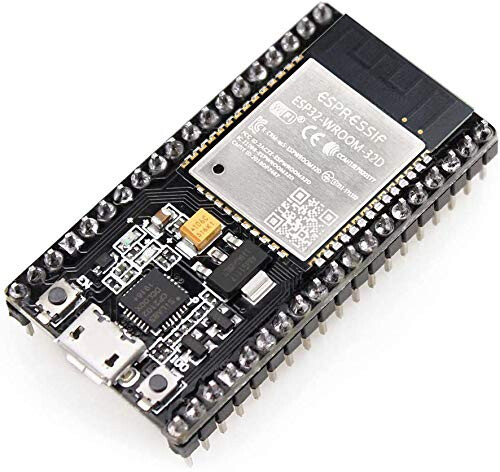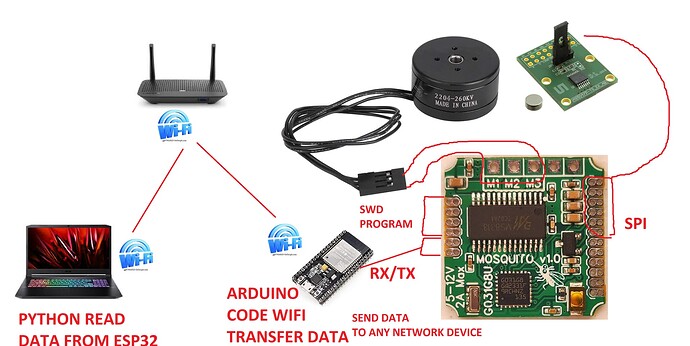This is my take on the setup, with what I have and what I know.
- Motor ($19)
Brushless-Efficiency-Drones-Gimbal
- Sensor and magnet ($16):
https://www.digikey.com/en/products/detail/ams/AS5047P-TS-EK-AB/5452344
- Board (about $10)
- ESP32 Wroom ($10)
HiLetgo-ESP-WROOM-32-Development-Microcontroller-Integrated
-
Off-shelf commercial WiFi router (assume you got it)
-
Off-shelf notebook (assume you got it)
Each setup is approximately $60, before tax, shipping, 3D printing, extra cables, power supply, etc.
I have 5 alpha-version mosquito boards, you can power them up with the Wroom, because I messed up the LDO and one of the pins, but they are working.
This is how they look





